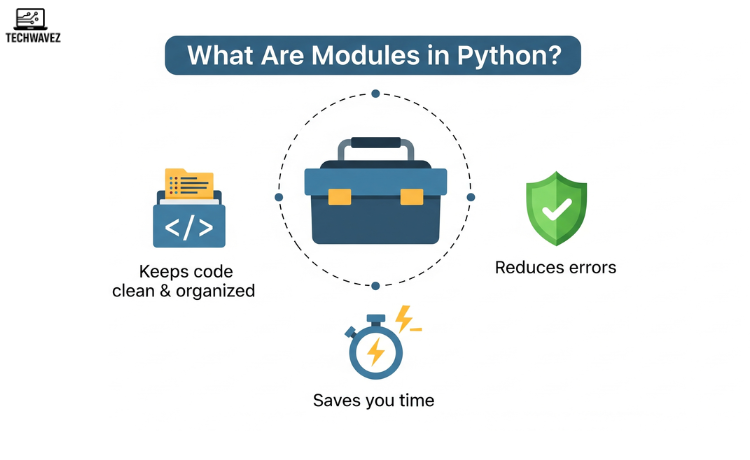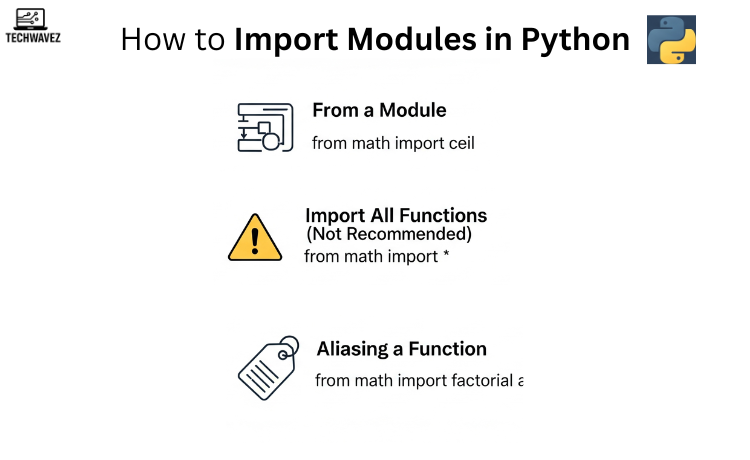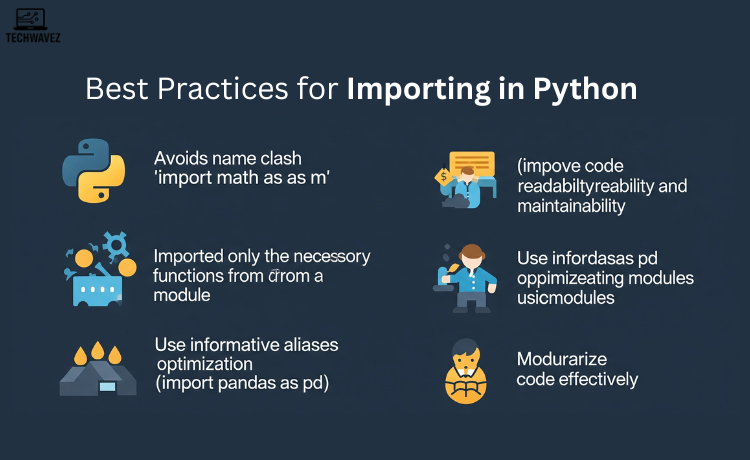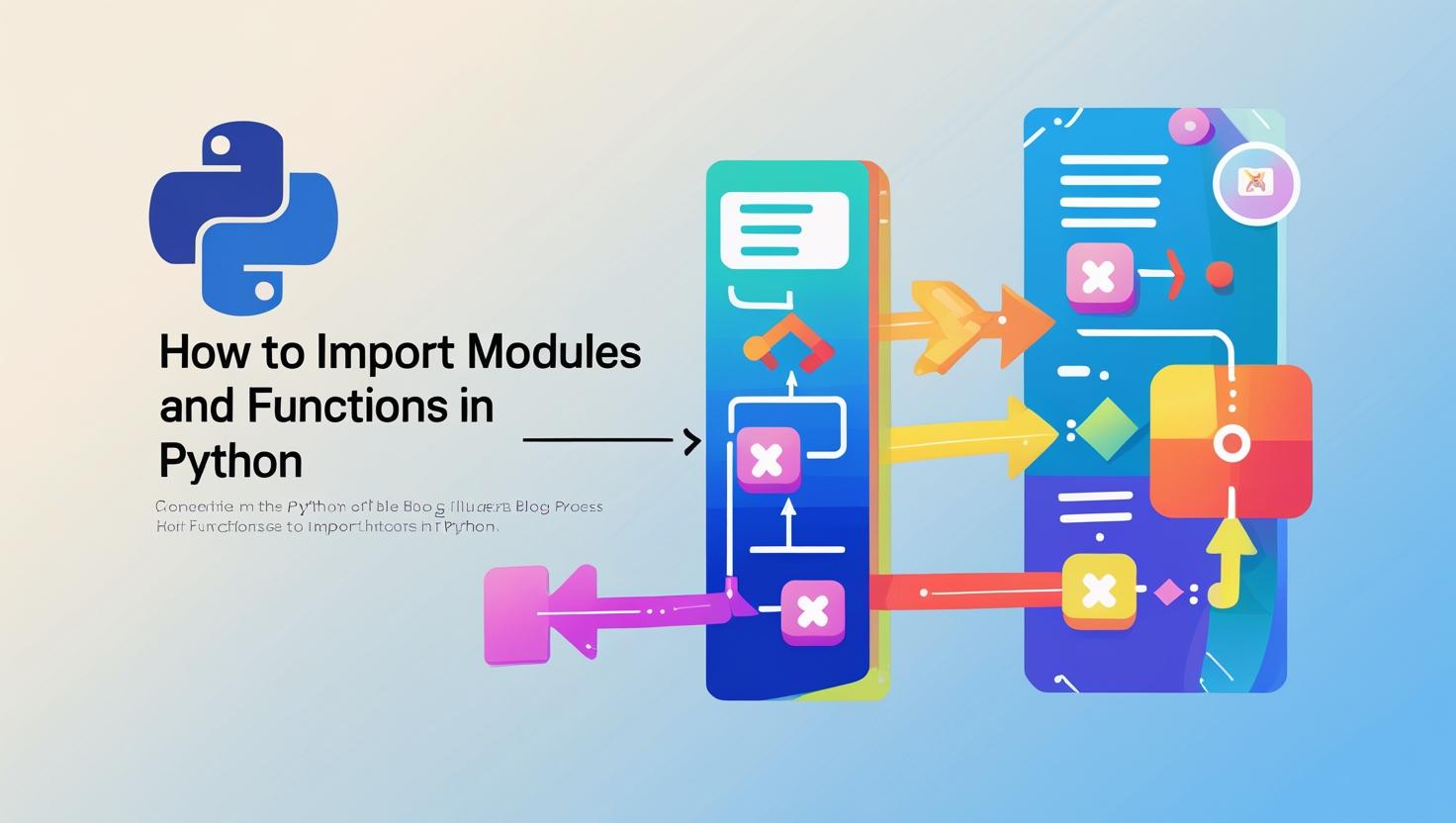Imagine building a big Python project without reusing any code. It would be like making a new wheel every time you want to ride a bike! That’s where modules and functions step in. They help you organize your code, avoid repetition, and make everything more efficient.
If you’re new to Python and feeling unsure about how to use these tools, don’t worry—this guide walks you through everything step by step. By the end, you’ll understand how to import and use Python modules and functions like a pro.
What Are Modules in Python?

Think of a module as a toolbox filled with ready-made tools (functions, variables, classes) for specific tasks. Python offers many built-in modules to make programming easier—whether you’re dealing with math, dates, or data analysis.
Here’s why modules are so useful:
- They keep your code clean and easy to manage.
- You don’t have to rewrite the same logic again and again.
- You reduce the risk of errors by using well-tested code.
Modules are simply Python files (.py) that contain reusable code. You can also create your own custom modules or import external ones from libraries. Ready to see how it works?
How to Import Modules in Python

Python makes it really simple to bring in modules. There are a few ways to do it:
1. Using the import Statement
This is the most common method. It lets you access all the functions and variables in a module.
import math
print(math.sqrt(16)) # Outputs: 4.0
Here, we imported the entire math module to use the sqrt() function.
2. Using from … import for Specific Functions
If you only need one or two functions, you can import just those.
from math import sqrt
print(sqrt(16)) # Outputs: 4.0
This method keeps your code cleaner, especially when you’re using just a few tools from a large module.
3. Using import … as to Create Aliases
Sometimes, module names are too long or conflict with others. Aliases are a great way to shorten them.
import math as m
print(m.sqrt(16)) # Outputs: 4.0
You can also use aliases for better readability, especially in data analysis (e.g., pandas as pd, numpy as np).
What Are Functions in Python?
Functions are reusable blocks of code that perform a specific task. They let you organize your program into smaller pieces, making it easier to read and maintain.
Here’s a simple function:
def greet(name):
return f"Hello, {name}!"
You can define your own functions or use functions from modules. Either way, they’re essential for writing clean and efficient Python code.
Want to see how functions can help with real use cases? This simple Python BMI calculator using functions is a good place to start.
How to Import Functions
You can import individual functions the same way you import modules.
Example 1: From a Module
from math import ceil
print(ceil(5.3)) # Outputs: 6
Example 2: Import All Functions (Not Recommended)
from math import *
print(factorial(5)) # Outputs: 120
Be careful with this method—it can clutter your namespace and lead to naming conflicts.
Example 3: Aliasing a Function
from math import factorial as fact
print(fact(5)) # Outputs: 120
This is useful when two modules have functions with the same name.
Real-Life Examples
Example: Using math Module
import math
radius = 5
area = math.pi * (radius ** 2)
print(f"The area of the circle is {area:.2f}")
You can use modules like math to perform quick calculations and reduce manual work.
Example: Using datetime Module
from datetime import datetime
now = datetime.now()
print(f"The current date and time is {now}")
The datetime module helps you work with dates and times easily. It’s especially useful in time-tracking apps, reports, or even auto-deleting Google account data after a set period.
Best Practices for Importing in Python
To keep your code efficient and readable, follow these tips:

1. Avoid Name Conflicts
If two modules have functions with the same name, use aliases.
import math as m
from statistics import mean as stat_mean
2. Import Only What You Need
Avoid importing an entire module if you only need one function. This keeps your code fast and uncluttered.
3. Use Meaningful Aliases
Pick short but clear aliases. For example:
import pandas as pd
import numpy as np
These are standard and widely recognized in the data community.
4. Modularize Your Own Code
Once you get comfortable, you can write your own modules and reuse them across projects. This is a great step toward becoming an efficient developer.
Leverage Modules for a Competitive Advantage
Learning how to import and use functions/modules isn’t just about writing clean code—it’s about working smarter.
In the same way that modules make your Python code more organized, tools like CRM software help businesses streamline customer management and workflows. If you’re curious about optimizing your business processes, check out Asif Khan’s in-depth guide on choosing the best CRM software in 2025.
Wrapping Up
Here’s what you’ve learned today:
- What Python modules and functions are
- Different ways to import them using
import,from, and aliasing - Practical examples using
mathanddatetime - Tips to keep your imports clean and conflict-free
With a bit of practice, using modules and functions will become second nature. The more you use them, the more efficient and confident you’ll become with Python





